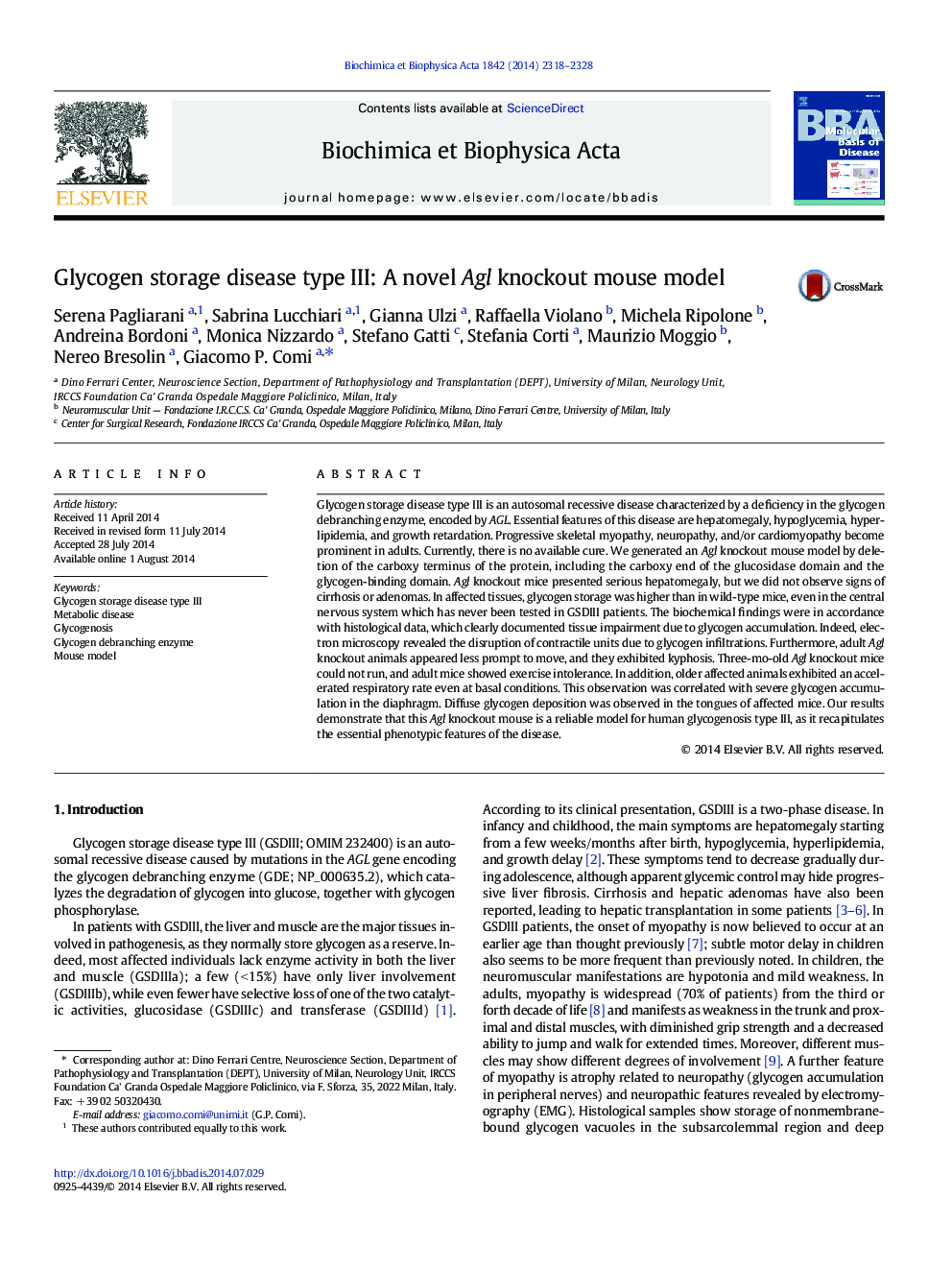| کد مقاله | کد نشریه | سال انتشار | مقاله انگلیسی | نسخه تمام متن |
|---|---|---|---|---|
| 1904737 | 1534654 | 2014 | 11 صفحه PDF | دانلود رایگان |

• GSDIII: hepatomegaly, hypoglycemia, progressive myopathy. No cure is available
• Agl knockout mouse model generated by deletion of the carboxy terminus
• Agl-KO mice: hepatomegaly, large glycogen storage in hepatocytes and muscle fibers
• Adult Agl-KO mice cannot run nor sustain milder skeletal muscle exercise
• Glycogen deposits in diaphragm and in the tongue from affected mice
Glycogen storage disease type III is an autosomal recessive disease characterized by a deficiency in the glycogen debranching enzyme, encoded by AGL. Essential features of this disease are hepatomegaly, hypoglycemia, hyperlipidemia, and growth retardation. Progressive skeletal myopathy, neuropathy, and/or cardiomyopathy become prominent in adults. Currently, there is no available cure. We generated an Agl knockout mouse model by deletion of the carboxy terminus of the protein, including the carboxy end of the glucosidase domain and the glycogen-binding domain. Agl knockout mice presented serious hepatomegaly, but we did not observe signs of cirrhosis or adenomas. In affected tissues, glycogen storage was higher than in wild-type mice, even in the central nervous system which has never been tested in GSDIII patients. The biochemical findings were in accordance with histological data, which clearly documented tissue impairment due to glycogen accumulation. Indeed, electron microscopy revealed the disruption of contractile units due to glycogen infiltrations. Furthermore, adult Agl knockout animals appeared less prompt to move, and they exhibited kyphosis. Three-mo-old Agl knockout mice could not run, and adult mice showed exercise intolerance. In addition, older affected animals exhibited an accelerated respiratory rate even at basal conditions. This observation was correlated with severe glycogen accumulation in the diaphragm. Diffuse glycogen deposition was observed in the tongues of affected mice. Our results demonstrate that this Agl knockout mouse is a reliable model for human glycogenosis type III, as it recapitulates the essential phenotypic features of the disease.
Journal: Biochimica et Biophysica Acta (BBA) - Molecular Basis of Disease - Volume 1842, Issue 11, November 2014, Pages 2318–2328